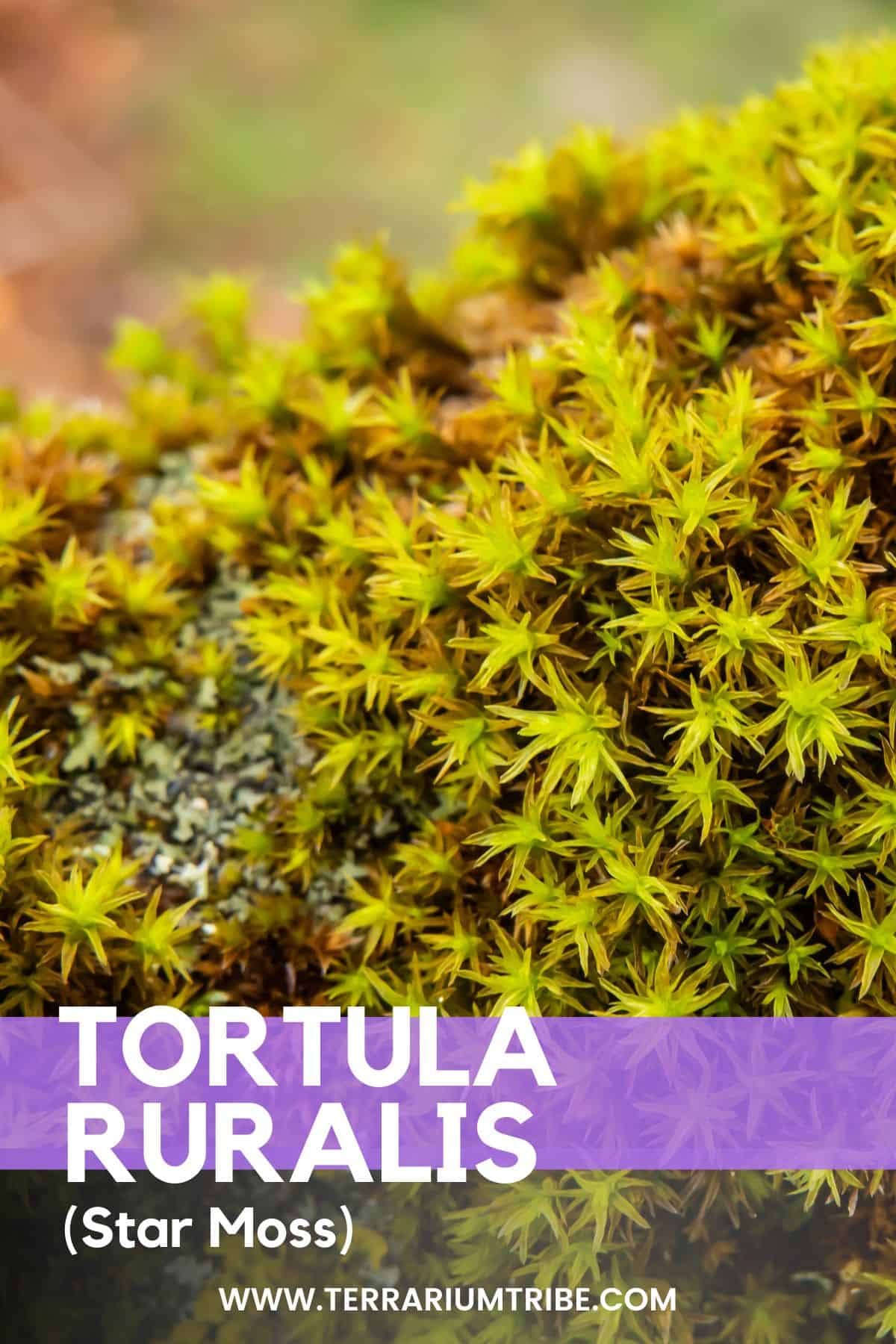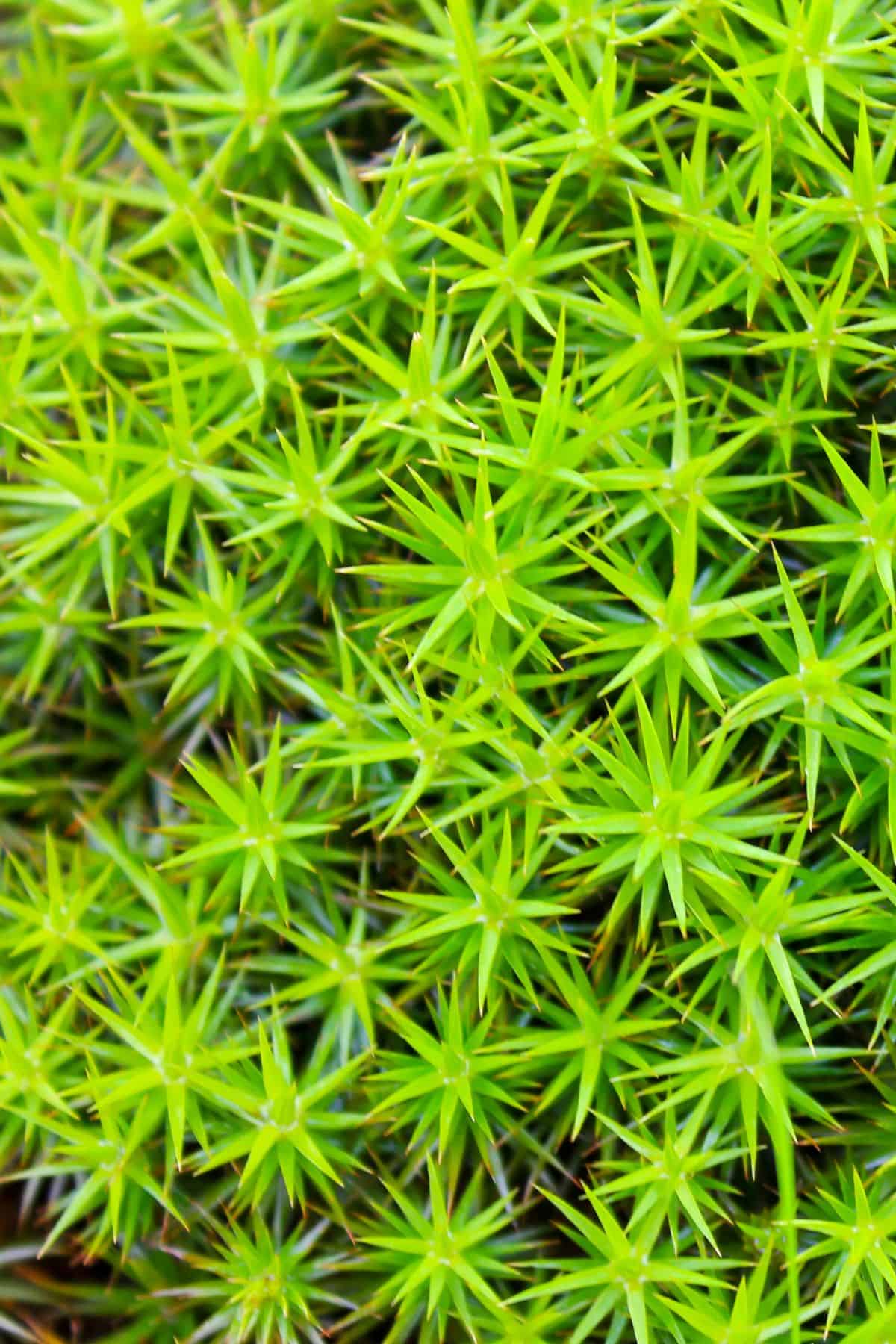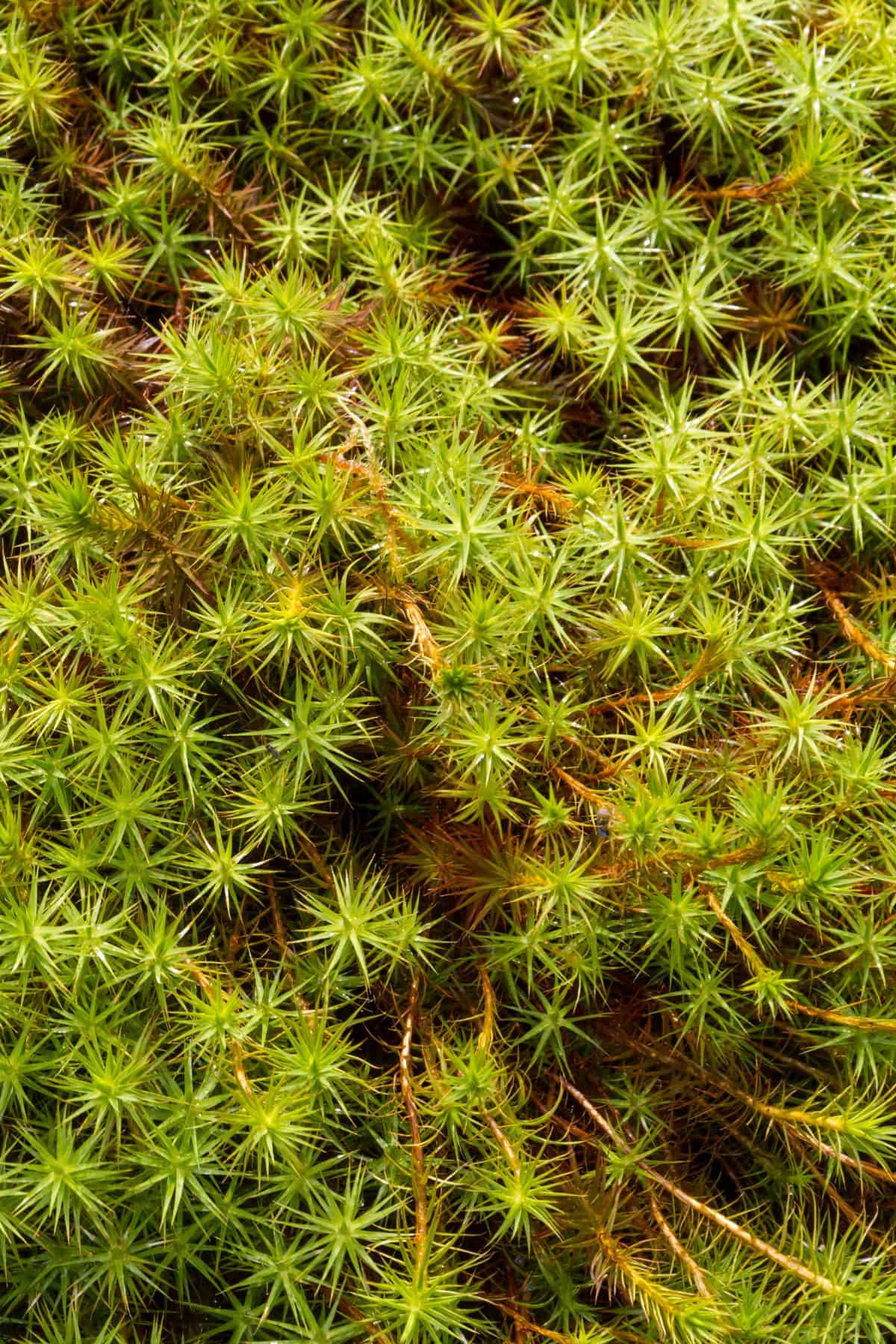Tortula ruralis is a hardy moss with some serious star power.
Unsurprisingly, it gets the common name “Star Moss” for its tight bundles of star-shaped leaves. And though it may be short in size, it’s certainly not short in character.
With its low-growing style, it makes a stunning moss carpet.
It’s more than just a pretty face, too. This successful plant is found all over the world, so you can be sure it can handle a wide variety of environmental conditions.
Honestly, if it can handle deserts, mountains, and driveways, then gardens and terrariums are going to be a piece of cake.
Somehow, this moss is capable of completely drying out (for months) and even surviving underwater…
Despite its many superhero abilities, it’s actually not a commonly sold species. But if you’re lucky enough to get your hands on this mossy superstar, here’s how to look after it!

Where to Buy Star Moss
See the links below to purchase from reputable terrarium plant shops and marketplaces (may include affiliate links).
Tortula ruralis Care & Growth
| Plant Type | Moss |
| Lighting | Medium – high indirect light |
| Temperature | 55-80°F (12-26°C) |
| Watering | Infrequent, even moisture |
| Humidity | Low – high humidity (20-80%) |
| Growth | 0.5-2 inches |
Lighting
Star Moss can handle way more sunlight than most other terrarium mosses.
A study in the ecological journal Oecologia states that “This moss forms extensive cover in exposed and shaded areas in the sandy semi-arid grasslands of Central Europe.”
So if it can handle life out in the open plains, you can be sure it’s going to manage some midday sun in the home… That said, just because it can handle direct sunlight doesn’t necessarily mean that’s what you should be giving it.
The study linked above also found that Tortula ruralis grown in the sun vs. the shade had “lower plant mass, as well as lower tissue N, C, total photosynthetic pigment concentrations.”
In short, grow Star Moss in the shade where possible.
Lots of bright indirect light is the way to keep this moss happy and healthy.
Watering
Once again, Star Moss is unlike most other terrarium mosses in the watering front.
Mostly in that it is highly drought tolerant.
So much so that it’s become the go-to moss for scientific study on desiccation. Its ability to dry out and then later rehydrate is almost unparalleled.
It’s nice to know that you’re never going to harm this moss by underwatering, right?
Interestingly, the color and shape are both great indicators of how much moisture it’s holding. When it’s hydrated, the leaves are green and star-like, but when it’s dry, they become red and twisted.
Which leads to the other common name of this species, “Screw Moss” (the scientific name “Tortula” is also Latin for “twist”).

If left for long periods without moisture, it can dry out fully and go dormant. At that point, it’s looking neither healthy nor happy.
Interestingly enough, for a drought-tolerant species, it actually works submerged underwater, too! Albeit probably just for a few months… but it’s still sometimes (wrongly) used as an aquarium plant.
Substrate
Tortula ruralis is found in a huge range of environments across the world, from the Arctic to the desert.
It’s safe to say that your substrate of choice is probably going to be fine.
That said, I’d still recommend a typical terrarium mix as a starting point. Star Moss is still going to appreciate the added moisture and humidity that a tropical mix can provide.
Any take on the classic ABG mix should be a winner.
Temperature & Humidity
Star Moss is a hardy plant, and it’ll handle a wide range of temperatures and humidities.
Honestly, in a closed terrarium, I don’t see either being an issue. Provided your house is maintained at a (somewhat) comfortable temperature, this moss will do just fine.
Growth & Propagation
Tortula ruralis is a short, slow-growing moss, which makes it a great choice for terrariums.
It’s best used as a carpeting plant, and it can produce some stunning results once it’s grown in. Feel free to tear it up into chunks and place them around your terrarium so it grows in faster.

Varieties & Similar Plants
From a classification point of view, the road of the genus Tortula has been a rocky one.
It includes around 150 species, but it has been revised a lot over the years.
So you’ll often see Tortula ruralis now classified as Syntrichia ruralis instead. You may see this plant going by either name on the web.
That said, Tortula remains a diverse genus, and so there are many Star Mosses out there in the world.
Though they’re not to be confused with the (often similar-looking) Polytrichum family of Haircap Moss. These can also have a star-like appearance, but they grow much taller.
